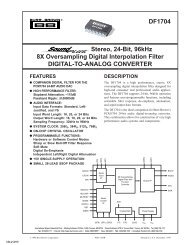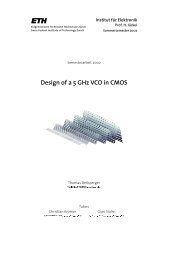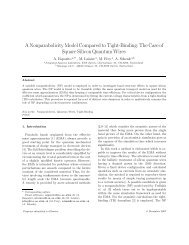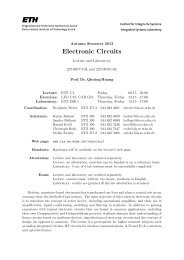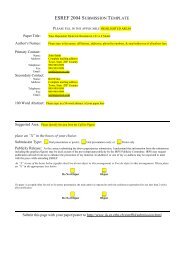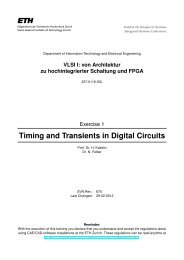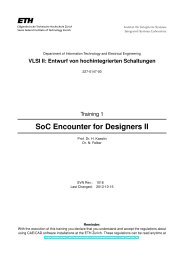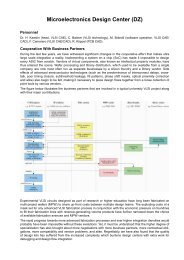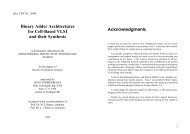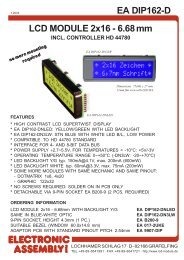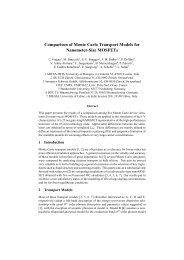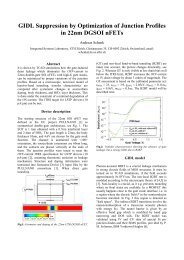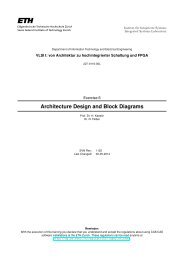Sample Solution Written Exam in VLSI I - Integrated Systems ...
Sample Solution Written Exam in VLSI I - Integrated Systems ...
Sample Solution Written Exam in VLSI I - Integrated Systems ...
You also want an ePaper? Increase the reach of your titles
YUMPU automatically turns print PDFs into web optimized ePapers that Google loves.
3 Functional Verification . . . . . . . . . . . . . . . . . . . . . . . . . . . . . . . . . . . . (19 po<strong>in</strong>ts)Problem 1: Testbenches and test cases.(a) Why is it dangerous for <strong>VLSI</strong> designers to def<strong>in</strong>e critical test cases for functional (1)verification of their own designs?(b) Why is a hard-coded testbench often ill-suited for functional verification? When (1)can a hard-coded testbench nonetheless be useful?(c) What is the advantage of file-based over golden-model-based testbenches?(1)(d) Consider the testbench setup <strong>in</strong> Fig. 8.stimuliappliappligoldenmodeldesignunder testexpout(1)expout(2)out(1)out(2)acquifor k = 1:2result = true;if out(k) ~= expout(k)result = false;endendreportFigure 8: Testbench setup.i) What type of testbench is it?(1 1 / 2 )ii) The response and actual response comparison is (pseudo-)coded <strong>in</strong> the figure. (1)What is the problem with this comparison function (acqui)?iii) Briefly describe a strategy to detect such flaws <strong>in</strong> the testbench.(1)Page 13 of 30<strong>VLSI</strong> I <strong>Exam</strong> Summer 2009



